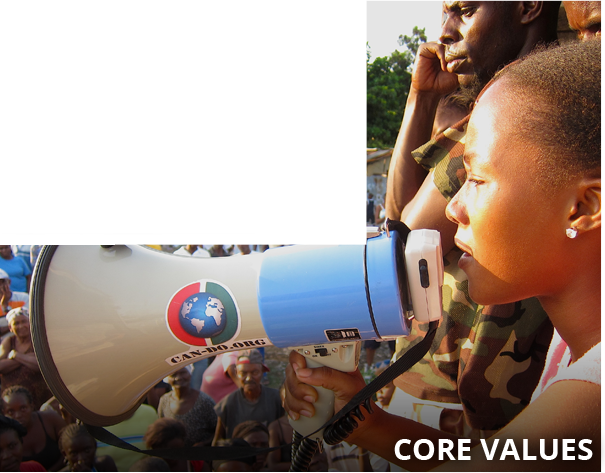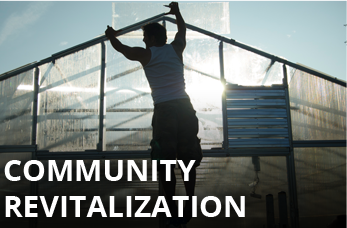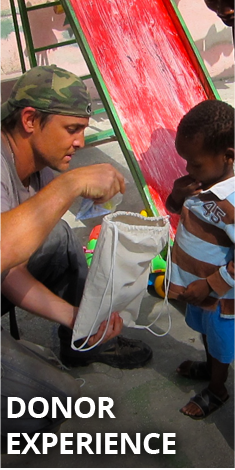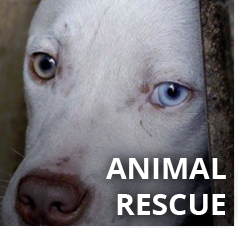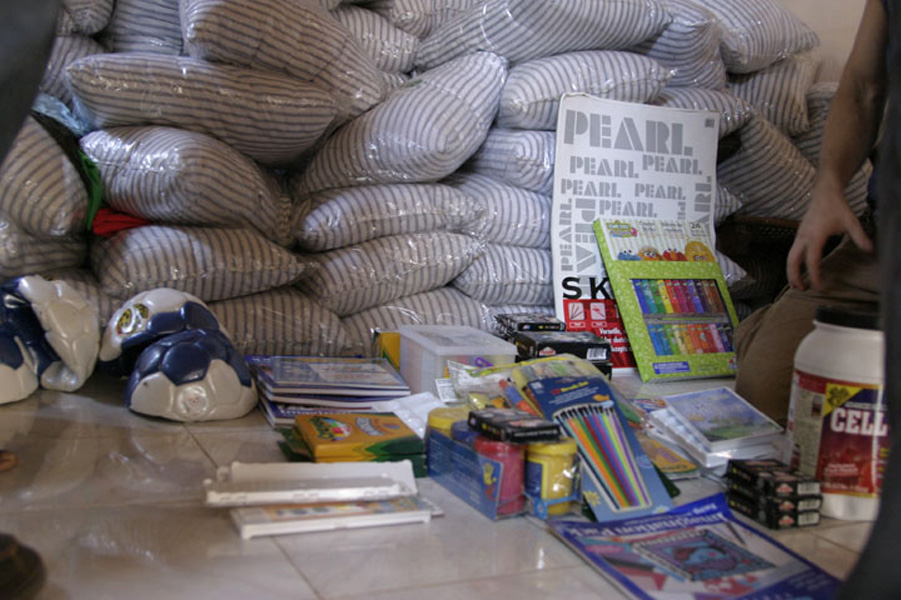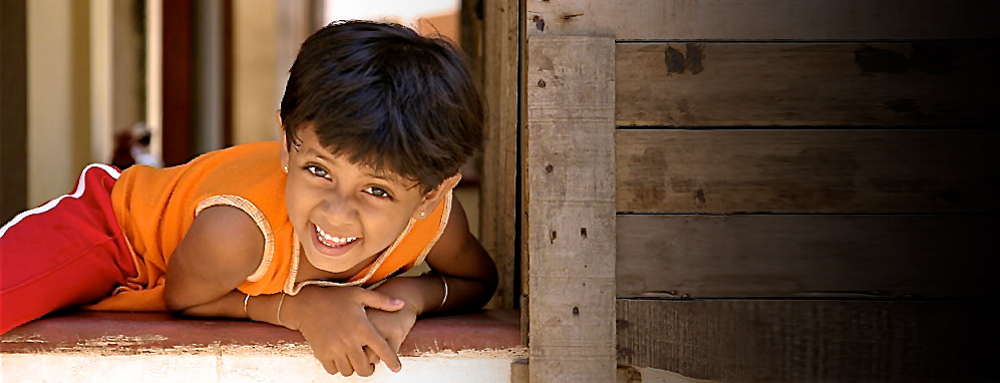
- RUNDOWN
- TEAM
- PARTNERS
- MORE
ASIA TSUNAMI 2004/2005
THE SITUATION: The Asian tsunami was caused by a 9.0 magnitude earthquake said to be as strong as 23,000 Hiroshima-type atomic bombs. The destruction was unfathomable. The earthquake triggered a tsunami that killed approximately 200,000 people in Indian Ocean coastal communities.
THE BEGINNING OF CAN-DO: Like many people around the world watching the news coverage of the tsunami disaster, CAN-DO founder Eric Klein wanted to help the survivors. After donating money to organizations on the ground, he quickly noticed that as time passed by the images on TV didn’t seem to match all the money that was raised to help the people in Sri Lanka. Where was the money going? Why weren’t the people receiving that aid?
His frustrations mounted watching the big organizations collect billions of dollars in donations, but not showing results. Klein decided to take action. He cleared out his personal savings account, and flew to Sri Lanka to see how far his money could stretch to help survivors of the devastating tsunami.
It was the beginning of CAN-DO, and the beginning of a life dedicated to cutting through the red-tape and making sure these survivors receive the dignity, support and aid they deserve.
ASSESSMENT: When Klein arrived in Galle, Sri Lanka, it was discovered that many of the displaced victims were still living in makeshift camps while they awaited housing and aid to be provided by the government. Just two months after the tsunami, the international media had already turned their backs and cameras on these people, allowing the public to think that everything had returned to normal. It was far from normal. The people of Sri Lanka found themselves playing the waiting game with not only the aid but also a solution to “The 100 Meter Law” or “Set-Back Zone”. This law states that people are NOT allowed to build or rebuild their homes within 100 meters of the ocean. Most of the displaced survivors came to find that their homes fell within this “buffer zone.” Therefore they were forced to live in displacement camps and in small tents actually designed for a much cooler climate. We were also informed that there had been no obvious dialogue between the government decision makers and the affected people regarding the government’s plan for the future. This had an adverse impact on people’s livelihoods and created great uncertainty, as these communities cannot unilaterally make decisions on whether to rebuild or not. The tourist areas and surrounding villages were already up and running and continuing to rebuild without any recourse from the government, while the poorer villages were forced to wait. Because of the country’s social welfare and relief systems that had failed to deliver in the aftermath of the disaster, the Sri Lankan’s were forced to rely on NGO’s (Non-Governmental Organizations) and private international donors.
WHAT WE DID: In three months on the ground in Sri Lanka, Klein was able to remove debris and complete full sanitation clean-up in several villages along the coast. Eric also created sustainable solutions for survivors by rebuilding local shops and restaurants, as well as a community drinking wells, bathing wells and playgrounds in the Galle area. Here are detailed highlights from two of the villages:
Village of Mahamodara, Galle, Sri Lanka:
• Created a database in the village that served to list the family members, ages, occupations, and needs within the village. This tool helped us track our progress as well as minimize the duplication of relief efforts. (This same method was used throughout all the villages CAN-DO worked in).
• Rented bulldozers and trucks (at less than a $100-300 dollars a day) to clear over a one mile strip of coastline along Galle Road.
• Filled in cesspools that were harboring an infestation of mosquitoes and disease using the bio degradable material from the damaged homes we cleared along the coast.
• Bulldoze debris, knock down unsafe structures and rebuild what we could. Most of the people had lost everything and this prompted CAN-DO to work towards increasing the standard of living as best we could. We located common areas and other logical places to build.
• With a blessing from the Monk, the support from the Major of Galle, Major Mohamad Ariff and the overwhelming support of the people, we began rebuilding the village.
• We established a playground area for the children as way to unite the community and had the kids help with the build.
• Rebuilt a 300-year-old community bathing well as a way of uniting Mahamodara.
Village of Pettiagalawalla, Galle, Sri Lanka:
• Our team then moved on to Pettiagalawalla, a small fishing village made up of 80 families. The tsunami had caused vast damage in the Sri Lankan fishing trade; 7500 fishermen died and 5000 had been reported lost. Coast wide, 18,000 boats were destroyed.
• Applying the same model as in Mahamodera, we began in Pettiagalawalla with basic clean up.
• Brought bulldozers and trucks to begin clearing the debris.
• Implements the use of our database to plan for and provide necessities.
• Distributed kits we created with small stoves, gas grills, and cooking utensils.
• Repaired Tuk Tuks (three wheelers), bikes, motorbikes and a truck so that parents could return to work and kids could get back to school.
• Helped restore a makeshift school where the smaller children could attend.
• As Klein’s team of locals began to grow they began branching out into teams reaching areas off the grid. Over three months on the ground, Klein’s team continued to bring aid the communities of Piyadigama, Kahava, Unawatuna, Matara, Dalawella & Katugoda.
• Since 90% of this villages were made up of fishermen, we bought boats, repaired damaged boats and motors, and supplied each boat with fishing nets. Within days of making these purchases entire villages where back on the water fishing.
Galle Hospital:
• Met with hospital staff and doctors to assess the hospital inventory needs.
• Purchased medical supplies, equipment, furnishing and refrigerators.
Ruhunu Orphanage:
• Supplied beds, mosquito nets and made regular drops of food and emergency supplies.
Sambodhi Home:
• Regular supply drops at facility which was home for mentally and physically disabled children.




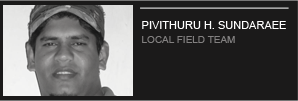



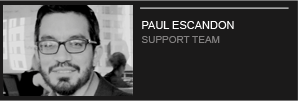

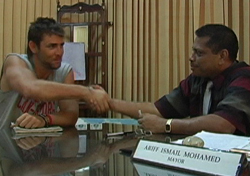
Thank you to the Mayor of Galle, Sri Lanka! His trust in me, a then stranger, with the people in his community who had lost everything taught me so much. In was an honor working with Mayor Mohamed.






